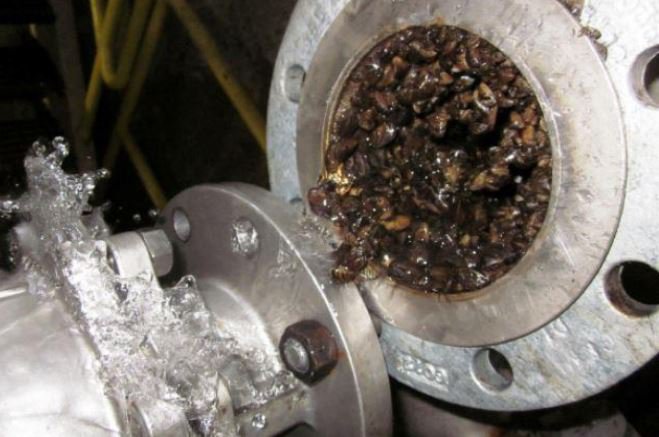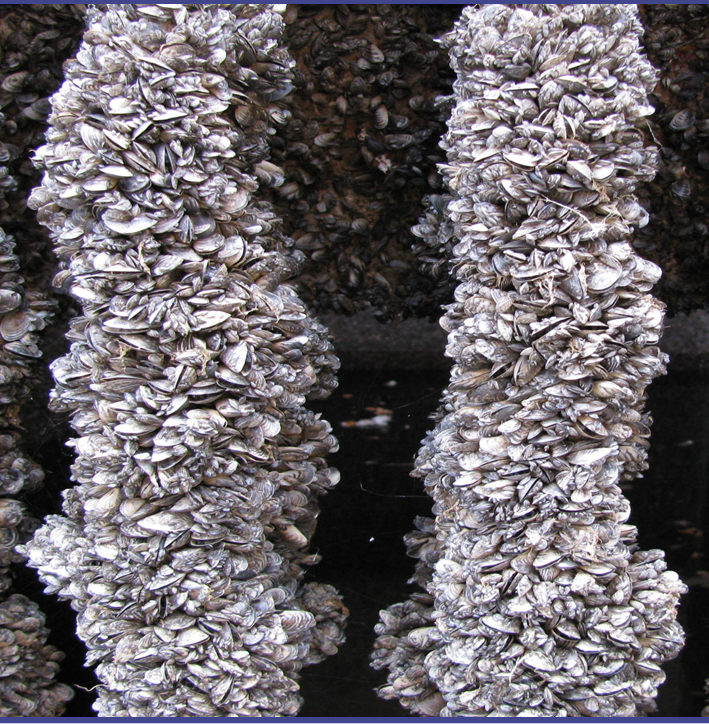Mussel Alert
The discovery of larvae of invasive freshwater mussels in eastern Montana heightens concern about an infestation of other Northwest waters, prompting a defensive action. Federal money to boost inspections of watercraft entering the Northwest is on the wa
- December 16, 2016
- John Harrison

Help from the federal government is on the way in the battle to keep invasive freshwater mussels out of the Columbia River Basin, an effort given a renewed sense of urgency in November with the discovery of mussel larvae in several Montana water bodies in the Missouri river drainage east of the Continental Divide.
Lakes, rivers, and reservoirs in many parts of the United States are infested with zebra and quagga mussels. Mussels and their larvae, which can live out of water for up to 30 days, adhere to watercraft and thus can easily be transferred from an infested lake or river. It has been estimated that the combined economic impact of a Northwest-wide infestation (including British Columbia) could be nearly $600 million per year. The impact could be especially troubling in the Columbia River and its major tributaries, as mussel colonies form rock-hard mats of shells that can clog water intake and delivery pipes, infest hydropower infrastructure, adhere to boats and pilings, foul recreational beaches, compete with native mussels, and disrupt food webs and the biological functioning of aquatic habitats. They pose a significant threat to salmon and steelhead restoration efforts in the West.

Mussels on a trash rack at Hoover Dam on the Nevada/Arizona border.
Watercraft inspection stations, funded and operated by the four Northwest states, and located along roadways leading into the region, have been effective at catching and cleaning infected watercraft, but more money is needed to boost the effort. The Council supported additional federal funding in a November 29 letter to the commander of the U.S. Army Corps of Engineers Northwestern Division, based in Portland.
The Corps received congressional authorization in 2014 to enter into cost-sharing agreements with the four Northwest states to establish and operate watercraft inspection stations. This authorization was updated in 2016 to include sharing the cost with the states on early-detection and rapid-response efforts. The Corps’ draft report justifying the expenditure of federal dollars for these purposes is currently out for public review and comment. Upon completion of public review on January 12, the document will be forwarded to Corps headquarters in Washington, DC for final approval. Two Corps officials reported to the Council at its December meeting that the approval process appears to be on track and that the cost-sharing agreements with the states should be finalized by April 2017. The new money will essentially double the amount the states spent in 2015.
The states will decide how to spend the money, which could go to new inspection stations or to pay for extended hours at existing stations. The federal funding is critical as the states do not have sufficient resources to ensure that watercraft inspection stations are located in all critical areas. Typically, the temporary stations are set up in March and stay in place into the fall.
The Council’s Columbia River Basin Fish and Wildlife Program specifically identifies the need to coordinate and share tracking and monitoring data on invasive mussels in the basin and data on rapid response, prevention, monitoring, containment, control, eradication, enforcement, and education and outreach efforts among a variety of organizations.
Until October and November of this year, the regional war on mussels was a matter of concern but not emergency. But then larvae from quagga and zebra mussels were confirmed in water samples from the Tiber Reservoir, located on a Missouri River tributary in eastern Montana. Ongoing sampling found more “suspect” samples in Montana water bodies east of the Continental Divide including the Canyon Ferry Reservoir, Missouri River and Milk River. Consequently, Montana Governor Steve Bullock issued an executive order November 30 giving the several state fish, wildlife and water agencies and the Montana Invasive Species Advisory Council responsibility for “control, containment and prevention” of quagga and zebra mussels, triggering the deployment of an interagency rapid response team to coordinate efforts to detect and respond to an infestation.
Related:
- Bullock Declares Natural Resource Emergency Due to Invasive Mussels
- Council Letter to U.S. Army Corps of Engineers on Funding to Prevent Spread of Invasive Mussels
- Building a 'Perimeter Defense' Against Invasive Mussels in the Northwest


